The White Horse Tavern
It began at the end.
Between Christmas and New Year, I was in New York City for a couple of nights on my way to Ireland. One of the places that I wanted to go was the White Horse Tavern in the West Village not far from Chelsea. I had passed the tavern a couple of times on my previous visit to New York but never made the time to drop in and have a drink. A lot of my travels involve various cultural pilgrimages – when in England some years ago, I drove out to East Coker because of its connection to TS Eliot and in the previous trip to New York, I had been upstate in Woodstock (an entire cultural pilgrimage in its own right) and visited Big Pink where Dylan and The Band had recorded The Basement Tapes. The trip to Ireland would entail some Joyce related travel in Dublin, taking in Behan play at The Abbey and a visit to Yeat’s grave outside of Sligo.
Why the White Horse Tavern? In the early hours of the fourth of November in 1953, the Welsh poet Dylan Thomas drank several whiskies at this pub and, when drunkenly returning to his digs at the famous Chelsea Hotel, Thomas was heard to exclaim ‘I’ve had eighteen straight whiskies and I think that’s the record’. These were not Thomas’ last words, and he did return briefly to the White Horse on the afternoon of the fourth but collapsed that night and was rushed to hospital where he died a couple of days later, on the ninth. A coroner described one of the causes of his death as ‘a gross insult to the brain’.
I had a couple of drinks, and we had a meal, squeezed into another booth with three young men, and the oldest didn’t seem pleased at sharing his booth. There was some amusement value in listening to the conversation – gay and arch as the older man gossiped about people such as Leo De Caprio (whom he claimed to reside in the same building), the shallowness of LA compared to New York and how the old neighbourhoods were becoming too much alike. There was none of the wit and playfulness of language that one might have heard seventy years earlier when Thomas would have entertained the Village barflies.

Laugharne
Following our New York sojourn, we flew to Ireland in search of Joyce and Yeats and Behan and Bobby Sands (but I will write about Ireland another time) and then caught the ferry across to Holyhead with plans to have a driving holiday around Wales.
High on my list of places to visit was Laugharne where Dylan Thomas lived for several years in the late ‘forties and early ‘fifties. Some say that it was the inspiration for the town of Llareggub featured in the verse play ‘Under Milkwood’, much of which he wrote whilst in Laugharne. To get to Thomas’ house, there are two options. The first it to walk up a hill and then down the other side. It is a narrow road that leads to a resort and there are several signs to say that there is no parking. The other option is to walk along a path on the bank of the river at the base of Laugharne Castle, climb up a steep set of stairs and then back down again. We took the river option as there was a lot of slippery ice on the road and, because the tide was out, the path was easier to navigate.
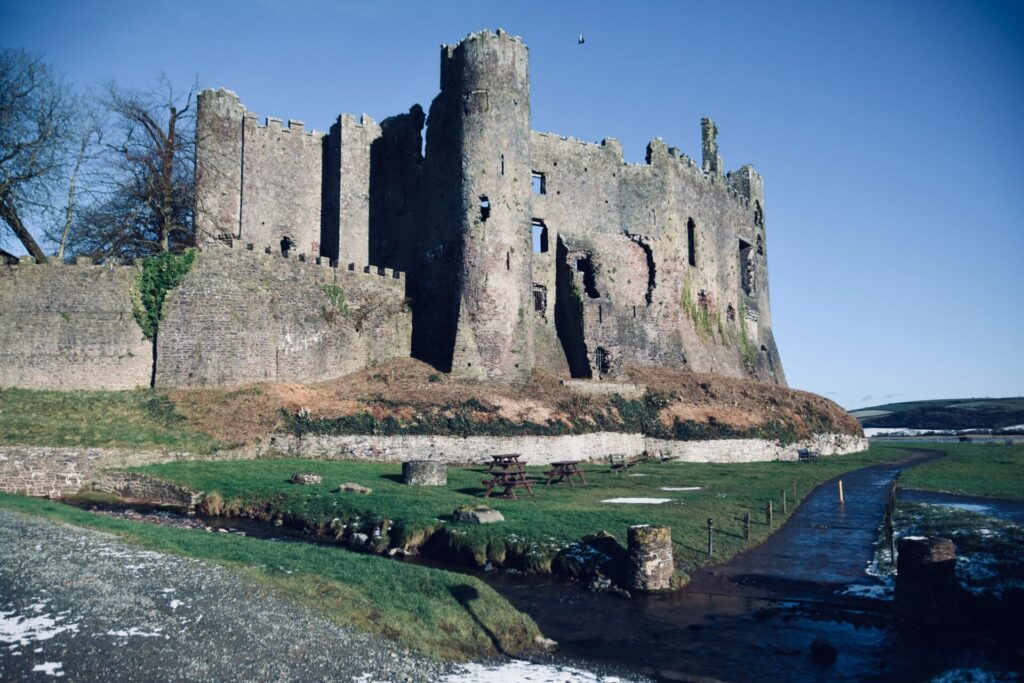
Once we had climbed the stairs, we came to small building that had been Thomas’ studio. Small by today’s standards, I suspect that the original purpose of the building might have been a garage for a car. A car like a Morris 8 would have easily fitted into the space. From his desk, Thomas had fantastic views across the mouth of the River Tâf.
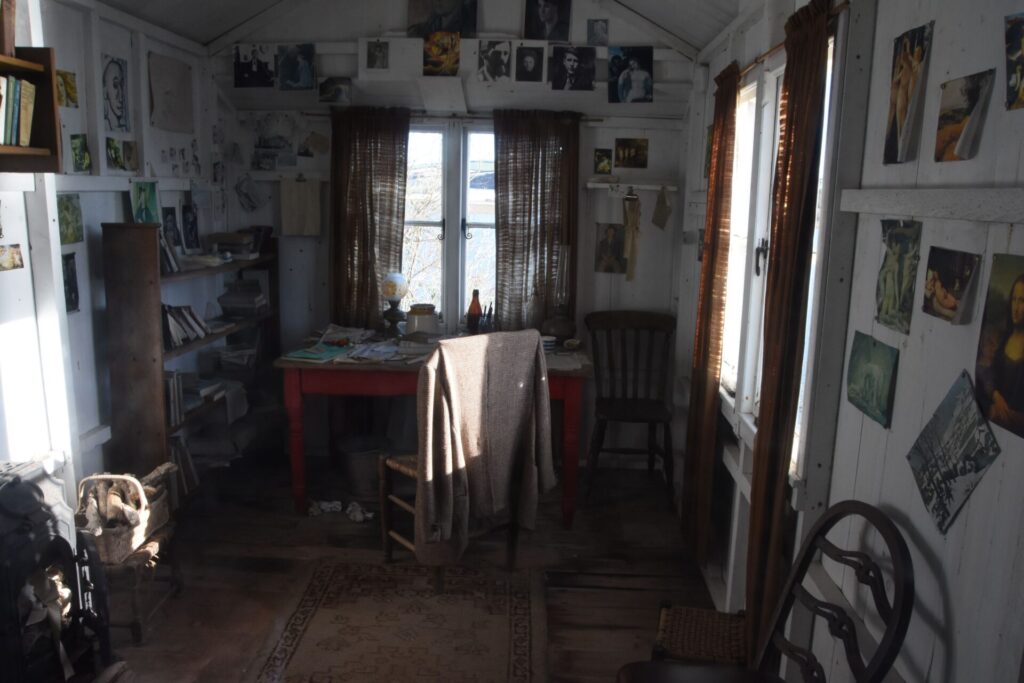
The house where Dylan and his wife, Caitlin, lived for many years is located on the water’s edge and is reached by climbing down a steep set of stair made more perilous the morning we were there because of the ice.
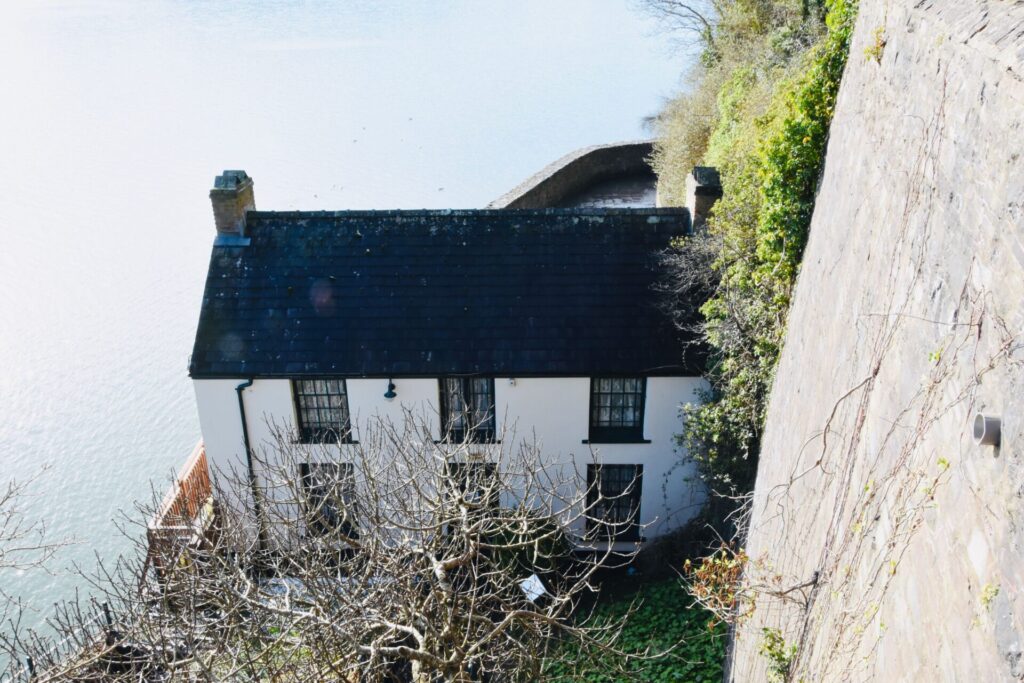
The house is now operated as a museum and tea room by a group of friendly volunteers. There is a small gift shop just inside the front door that sells a range of books and other merchandise. I picked up a couple of cd’s of Dylan Thomas reading his own poems and a great cd of the original BBC 1954 broadcast of Under Milkwood with Richard Burton as the narrator. The upper floors contain original furniture belonging to Dylan and Caitlin and a lot of memorabilia including rare editions of his books. The lower floor leads to a terrace and there is also a tea room with home made food prepared by the volunteers including soups, scones and Welsh Cakes.
They have a great website that you can access by clicking here
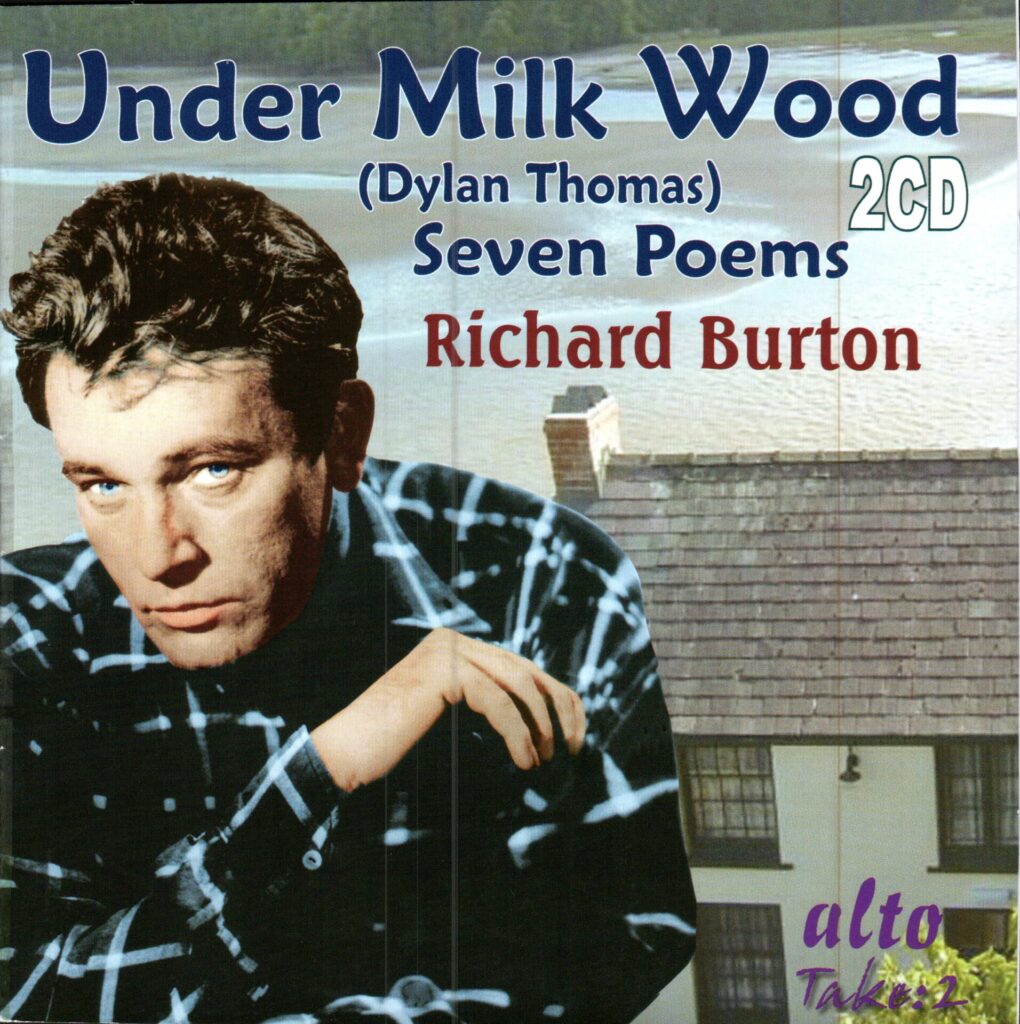
The Cemetery
Dylan and Caitlin are both buried in the Laugharne Cemetery in the grounds of St Martins Church just as you enter the town from the north. It is a simple grave marked with a white wooden cross that is replaced from time to time. There are no other signs or markers to tell you where the grave is. The grave itself faces away from the entrance but is easily found as it has Caitlin’s details on the back of the cross and this can be seen from where you first enter the newer graveyard from the carpark.

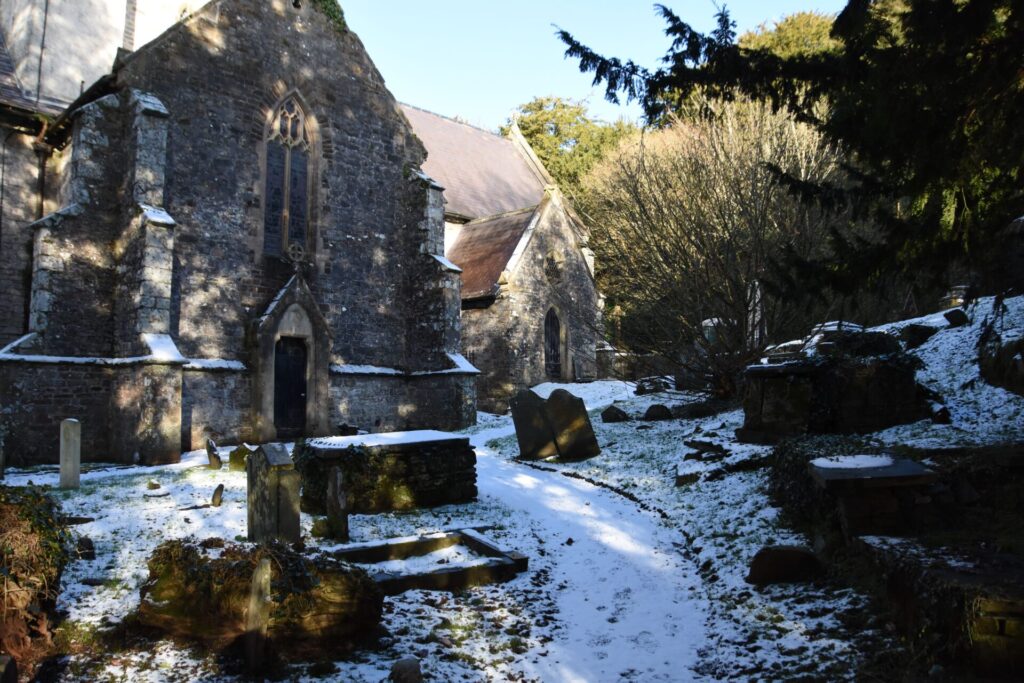
The Poems
I can’t remember when I first read the poems of Dylan Thomas. I can remember in my very early high school years hearing a sung version of Do Not Go Gentle sung by Jeannie Lewis and perhaps made me seek out the works. I’m not sure if I studied Thomas in High School and I don’t think I studied him at uni. My copy of the Collected Poems 1934-1952 is a 1978 reprint of the 1952 edition, and I suspect that I bought it sometime in the late seventies. I have a copy of Under Milkwood bought, I think, around the same time. I have since bought a later edition. I also have, in my library, a paperback of Paul Ferris’ biography of Thomas that has a sticker for the Co-op Bookstore and a price of $5 and I suspect that I bought that in the mid 80’s. I also have cd by John Cale released in 1992 called Words for the Dying which uses Thomas’ poems and Cale’s music to comment on the Falklands.
It is probably fitting that Dylan’s poetry is used to comment on war as he was greatly impacted by the Second World War and the bombing of London where he was working at the time. Some of his greatest poems are about death, and particularly death by fire or bombing. These poems include A Refusal to Mourn, the Death by Fire, of a Child in London with its chilling final line ‘After the first death, there is no other.’ He writes of other children dying in the bombing in poems such as Ceremony After a Fire Raid with its wonderful line ‘Love is the last light spoken’. Deaths and Entrances is a personal favourite with lines such as ‘In many married London’s estranging grief’ and there is also Among Those Killed in the Dawn Raid was a man Aged a Hundred and many other similar poems.
Of course, what can one say about Under Milkwood other than the fact that it is a masterpiece best heard rather than read. There have been several recordings including the Richard Burton version mentioned above, a recorded performance in more recent times starring Michael Sheen for the National Theatre and an interesting version filmed by the BBC in 2014 utilising voices in New York, London and Laugharne (all important places in the life of Thomas). Purists might not like the BBC version because of the cuts to the text but there are some excellent performances. You can watch the BBC production on Youtube by clicking here.
The trip to Wales earlier this year was my first visit and going to Laugharne, in particular, was inspiring and rekindled my interest in Dylan Thomas and I have been dipping in and out of the poems and listening to the recordings since I returned and encourage you to read some Dylan Thomas if you haven’t already.
You can read more of my blog posts here.
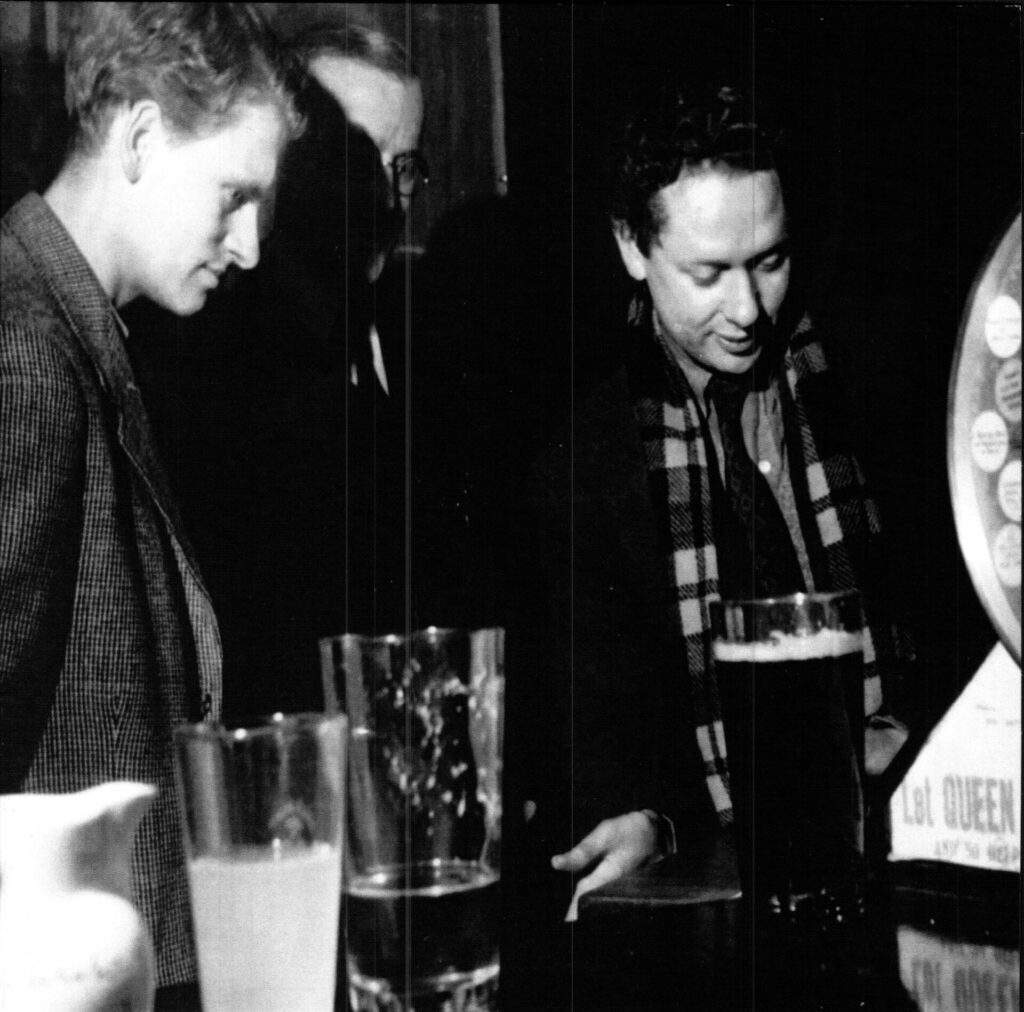

Love it Glenn. You’ve got a great, flowing style of storytelling that weaves you and the subject together effortlessly….
Thanks David – I really appreciate your comment.